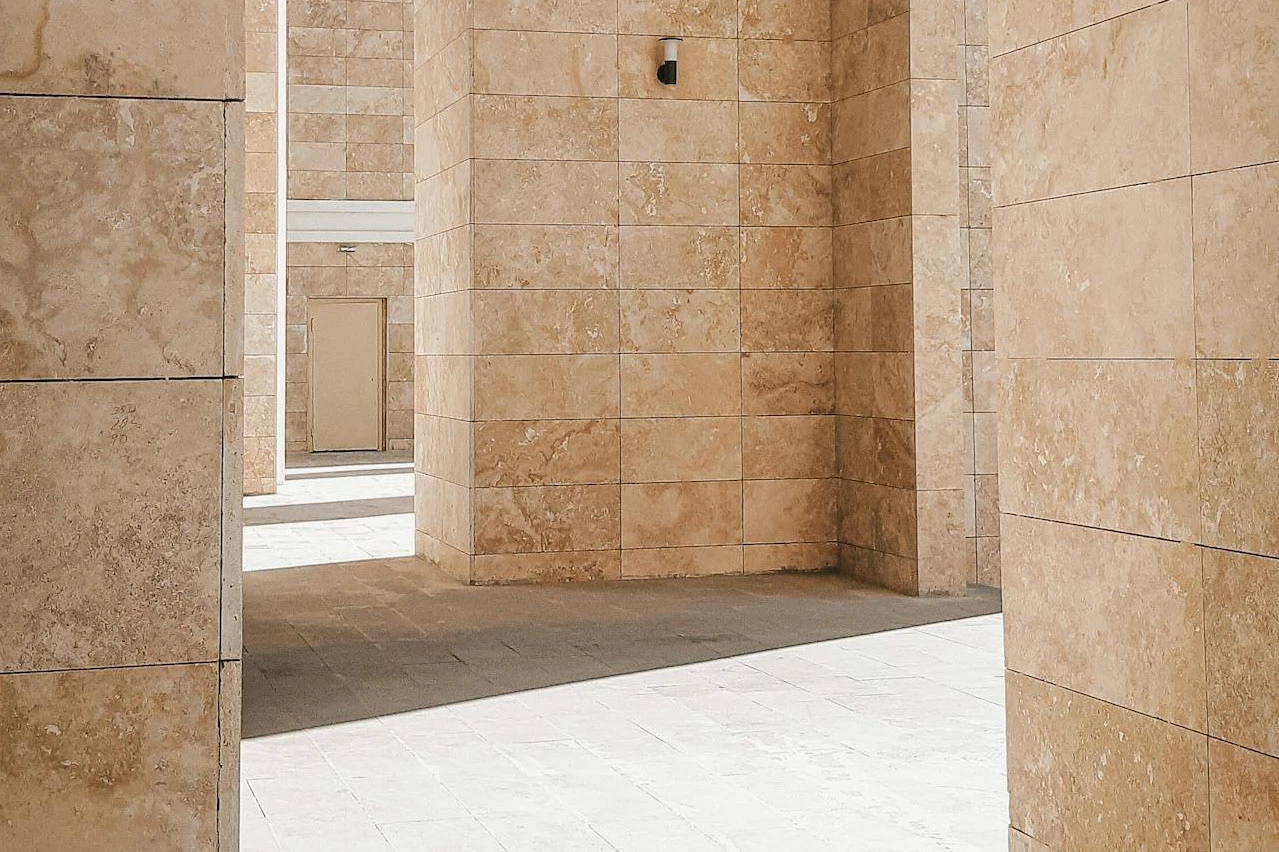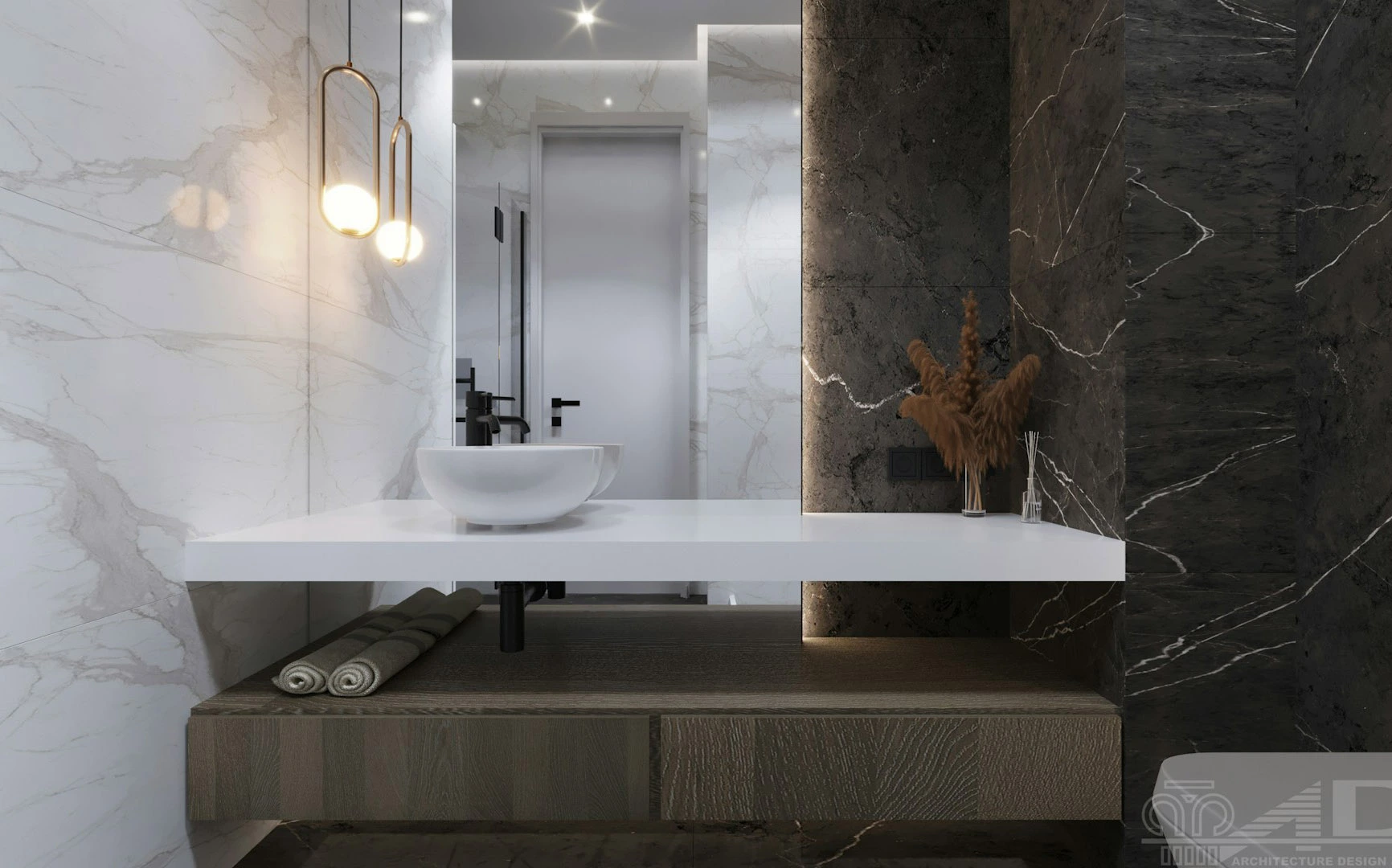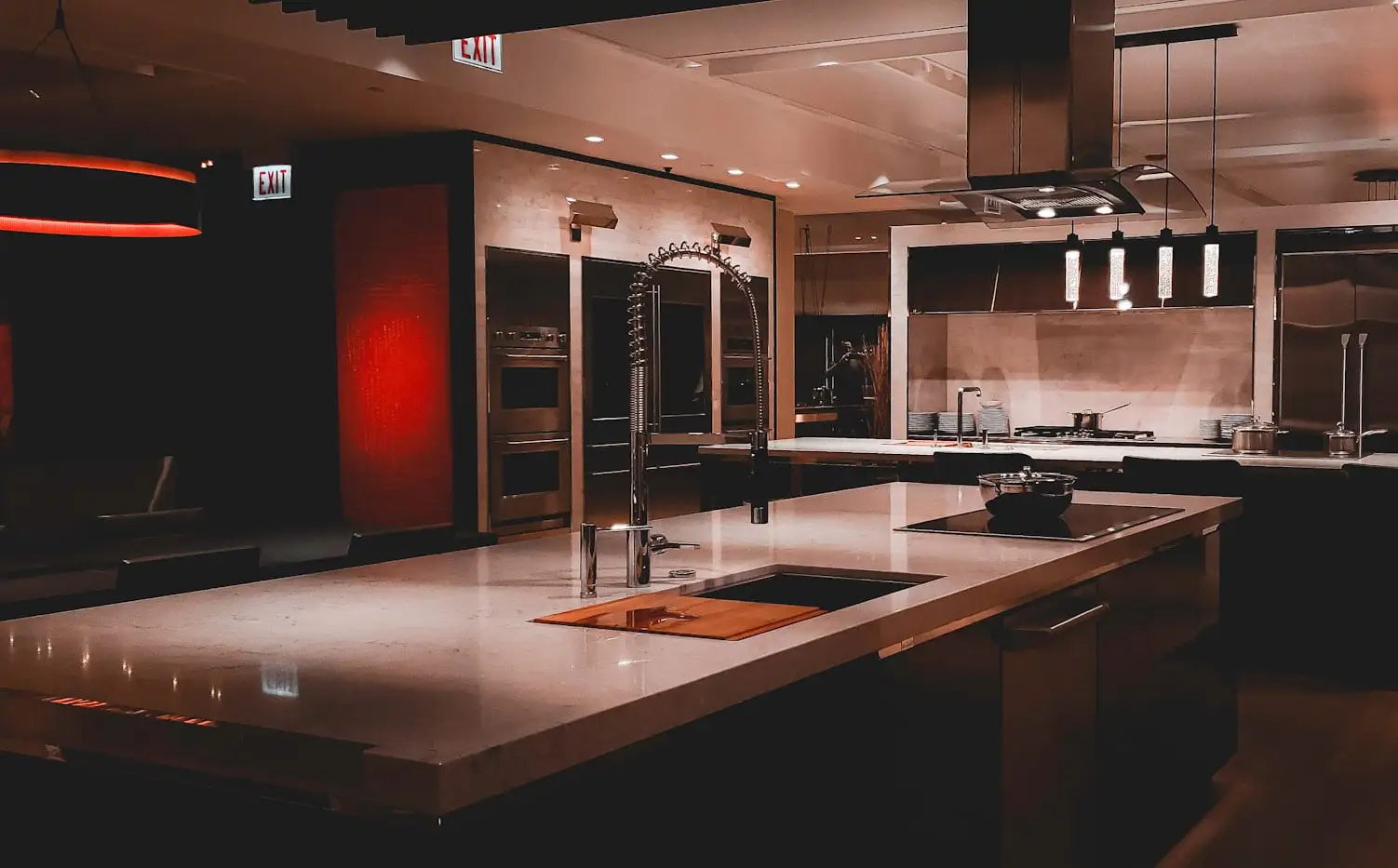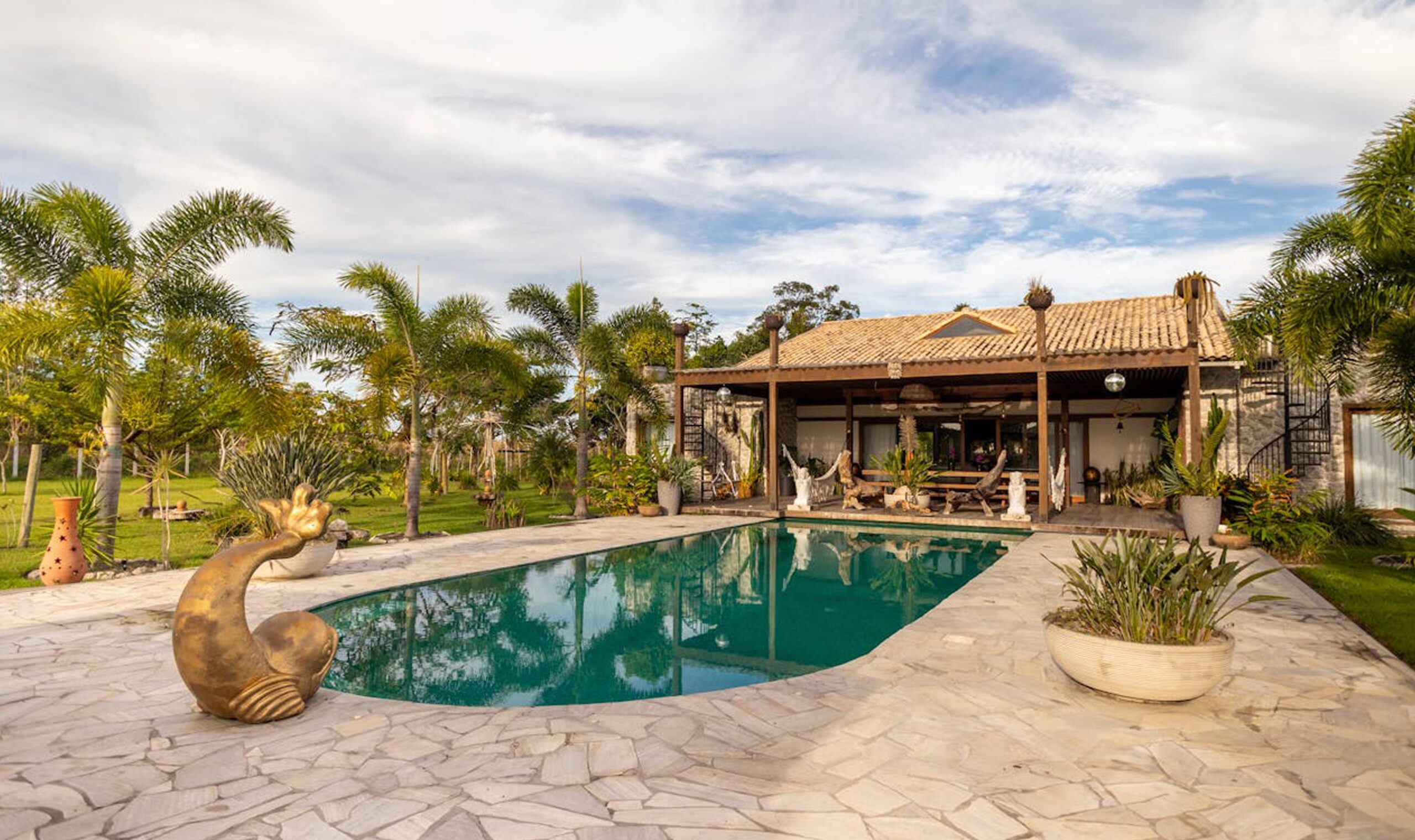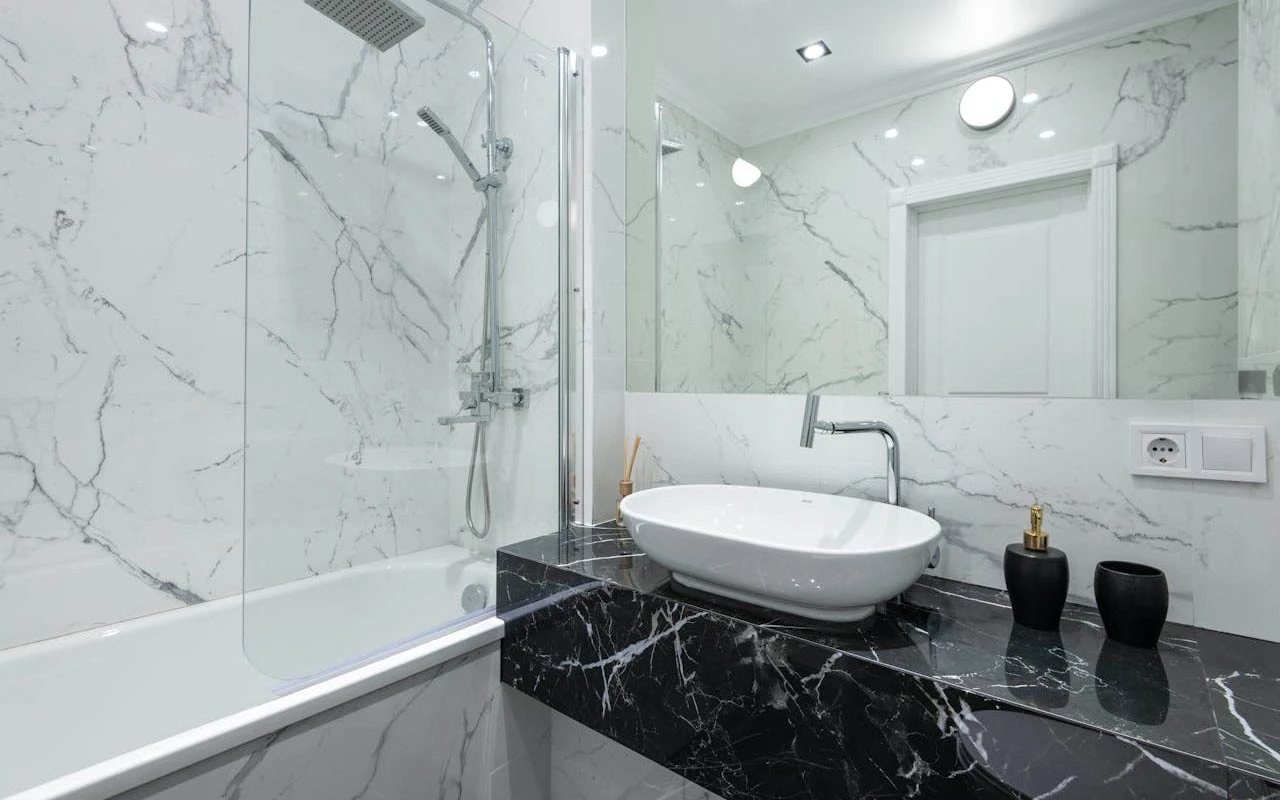Natural materials like wood and stone have been used in homes for centuries — but when combined thoughtfully, they create interiors that are not just beautiful but timeless. Whether you’re going for a modern rustic, minimalist, or Mediterranean look, blending these two textures brings warmth, depth, and sophistication to any space.
In this post, we’ll explore expert tips on how to combine wood and stone in interior design to create interiors that feel earthy, elegant, and enduring.
🌿 Why Wood and Stone Work So Well Together
Both materials are:
Natural: Sourced from nature, they bring organic authenticity to any space.
Timeless: Trends may come and go, but wood and stone remain design staples.
Texturally Rich: Stone offers ruggedness; wood brings warmth and softness.
When paired correctly, they create a balanced contrast that adds both character and calm.
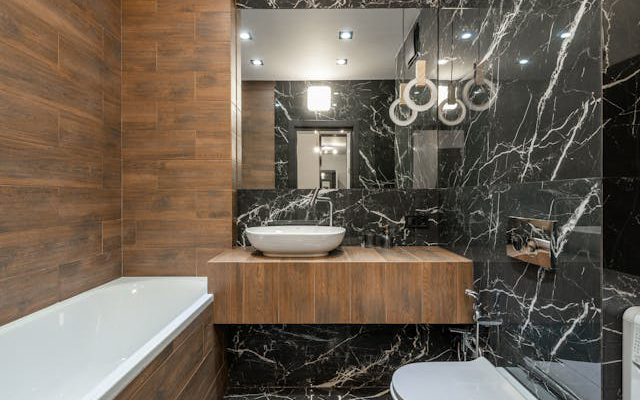
🧱 1. Choose a Dominant Material
To avoid overwhelming the space, decide early on which material will take the lead.
Use stone as a feature wall or flooring material in modern kitchens or bathrooms.
Let wood dominate in ceilings, cabinetry, or furniture for warmth.
➡️ Tip: In contemporary designs, using stone for structure and wood for finishing touches often feels more grounded.
🎨 2. Coordinate the Tones
Harmony is key when working with natural textures. You don’t want the materials to clash visually.
Pair cool-toned stones (like grey granite or slate) with cool-toned woods (like ash or maple).
Match warm stones (like travertine or sandstone) with warm woods (like walnut or oak).
➡️ Pro Tip: Try using a neutral color palette to let the natural textures speak for themselves.
🪵 3. Mix Finishes for Modern Elegance
Contrasting finishes add dimension and flair.
A rough stone wall beside sleek wooden cabinetry creates visual interest.
Combine matte-finished stone tiles with glossy wooden floors for a contemporary twist.
🛋️ 4. Use Wood and Stone in Specific Zones
Strategic zoning improves both functionality and aesthetics:
Stone in kitchens, bathrooms, or fireplaces — areas with high moisture or heat.
Wood in bedrooms, dining areas, and living rooms — where comfort is key.
🖼️ 5. Balance the Textures with Lighting and Decor
Natural materials absorb light differently.
Use warm lighting to enhance wood grains.
Add spotlights or downlights to highlight stone textures.
Complement with neutral fabrics, wool rugs, or linen curtains for a complete organic-modern vibe.
🌍 6. Get Inspired by Global Styles
Different cultures use wood and stone in beautiful ways:
Scandinavian Interiors: Light wood, rough granite, minimalist forms.
Japanese Zen Spaces: Dark woods, river stones, open flow.
Mediterranean Designs: Terracotta stone, distressed wood beams.
Studying global design trends helps bring uniqueness to your project.
🧩 Final Thoughts: Creating Timeless Spaces
When you combine wood and stone in interior design, you’re not just decorating — you’re storytelling. These materials ground a home in nature, history, and craftsmanship. Whether your style leans modern or traditional, this combination will always feel right.
✅ Quick Recap: Tips to Combine Wood and Stone in Interior Design
| Tip | What to Do |
|---|---|
| Choose a Dominant | Decide if stone or wood leads |
| Match Tones | Warm with warm, cool with cool |
| Mix Finishes | Rough + smooth = visual balance |
| Zone Usage | Stone for function, wood for warmth |
| Light It Right | Highlight natural textures |
| Style It Globally | Take cues from world interiors |


 Related Reads on Stoneman Magazine:
Related Reads on Stoneman Magazine: